Homemade Non Separating Almond Milk
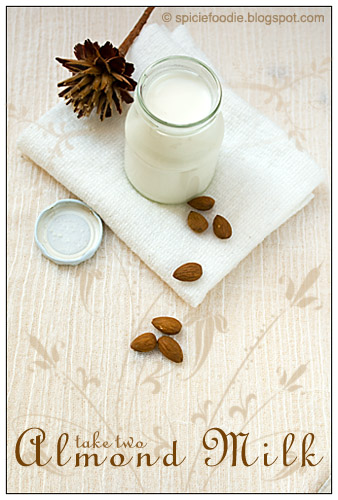
Have you ever tried almond milk? The taste is a velvety creamy taste with a hint of almonds. It can be sweetened (If I sweeten my I like to use honey, raw cane sugar or even maple syrup), it can also be flavored with vanilla or even chocolate. I find the taste of almond milk to be absolutely divine! I would even go as far as saying it is addictive. The first time I tried almond milk was about one year ago when I bought a liter from my local organic market. I knew immediately that this was going on my rotation of non-dairy milks.
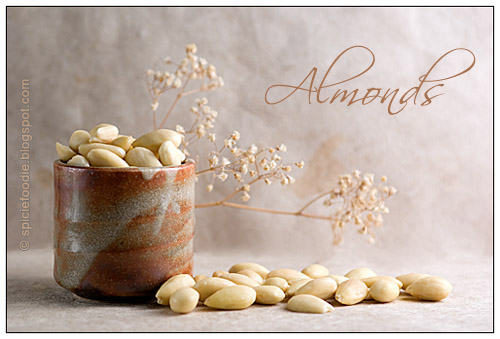
Last June I shared my recipe for raw Almond milk, and it has been one of my most popular post to date. The recipe that I shared works perfect and it is hassle free. But for some reason when I added the almond milk to my tea or coffee it would separate. The taste is still great but it’s not the prettiest looking thing. (I should note that as the almond milk sits in the refrigerator it does separate, but a quick shake and it’s ready to drink. ) I experimented with warming up the almond milk before adding it to the tea (coffee) or pouring the brewed tea (coffee) into the almond milk. Both of these methods prevented the separating but it was a pain having to dirty extra dishes or when I just wanted a quick splash. Then the lightbulb when off, cook the almond milk. Viola! This yielded non separating thicker almond milk. Cooking or boiling the almond milk prevented both the separating in tea, coffee as well as preventing the almond milk from separating as it sits in the refrigerator.
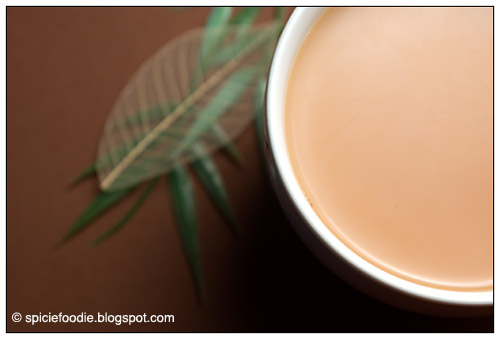
My recipe for non-seperating almond milk is the same as the raw almond milk, obviously the only difference being that at the end the almond milk is boiled. Here is the recipe (doubled) or you can also find it in my archives here.
Homemade Non Separating Almond Milk
Ingredients
- 200 grams or 7.5 ouncesblanched almonds
- 4 cups or 1 liter water
- sugar or honey or dates to sweeten optional and amount is to taste
- 1 large bowl
- cheese cloth or a clean kitchen towel or very fine sieve colander
- blender
- pot
Instructions
- Place the blanched almonds in a large bowl and cover with water. Leave to sit overnight.
- Drain the water, and place the almonds in a blender. Pour 2 cups of water into blender, and if using sweetener add it to the blender as well. Blend until the almonds have completely broken down to a fine almost paste. Place the cheese cloth (or other options) over a large bowl. Pour the liquid over the cloth, then pull up on all ends to squeeze out liquid onto the bowl . Once the liquid is all removed, place the ground almonds back inside the blender and add the remaining 2 cups of water, again repeating the process.
- Pour the almond milk into the pot, partially cover and under low heat simmer for 15 minutes. Keep a close eye on it as it may boil over. Stir now and then. Allow to cool before storing in the refrigerator. The almond milk will keep fresh in the refrigerator for 5 days.
Notes
Last time I also advised you not to discard the ground almonds because you can used them in baked goods. Or also “An option is to dry the ground almonds then once they have completely dried place them back in the blender and blend into a fine almond flour. Again this can be used in baked goods or any other recipes that might call for almond flour.” I have used the leftover ground almonds in a couple of recipes. I will have them written up to share with you very soon.
You may be wondering how to use the almond milk, just like you would cow or soy milk. My favorite way is to just enjoy a cold glass of almond milk, but I have used it in baking, cereal, muesli, and I’ve seen some people adding it soups. I will experiment further and get back to you. But now go on and enjoy some delicious, healthy, no preservatives, homemade almond milk.
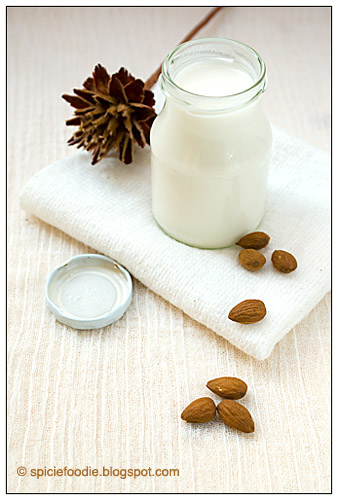
Nancy Lopez is a food blogger and author of the cookbook Mexican Tamales Made Meatless. Born in Mexico, raised in the US, and currently living in Southern Mexico, she has followed a meatless diet for almost 10 years. It is her passion and mission to share all she has learned about vegan Mexican cooking and vegetarian Mexican recipes. Mexican Made Meatless is a blog dedicated to preserving the authentic flavors of Mexican cuisine just without the meat. It’s a place to celebrate Mexican culture and all it’s delightfully delicious traditional foods. Read more…

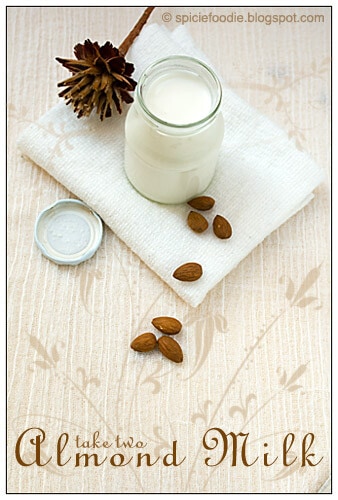
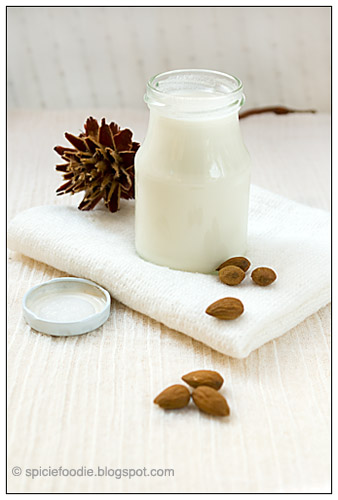
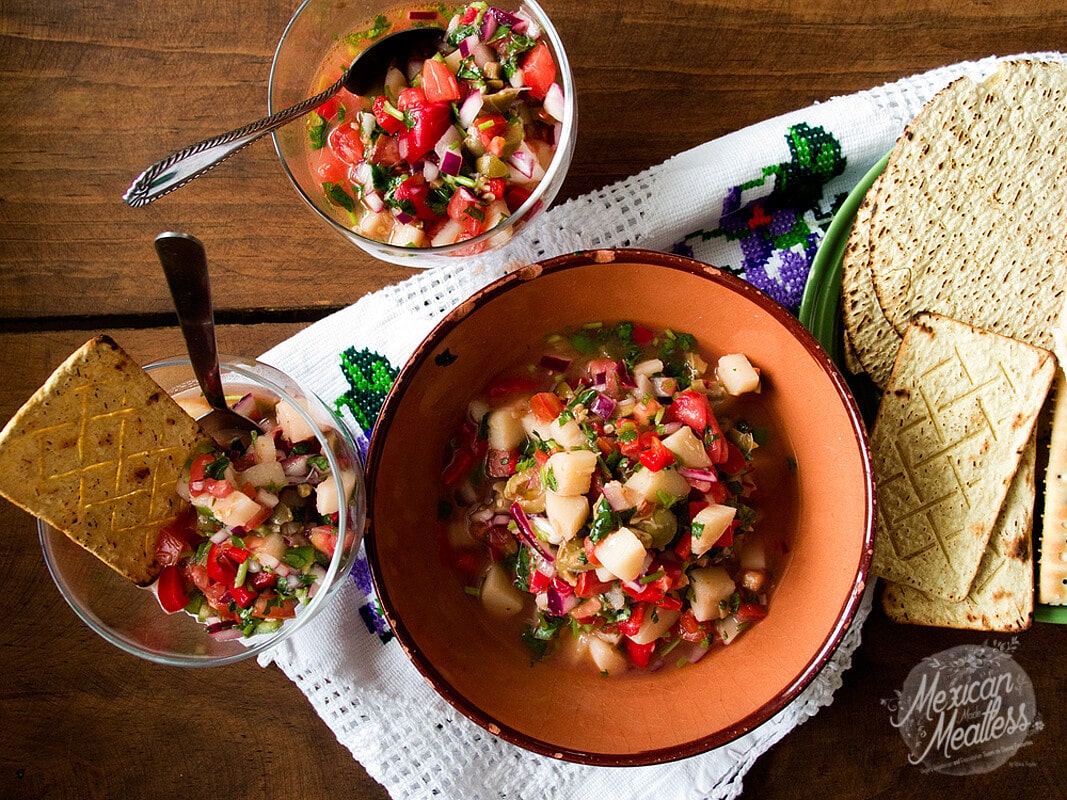
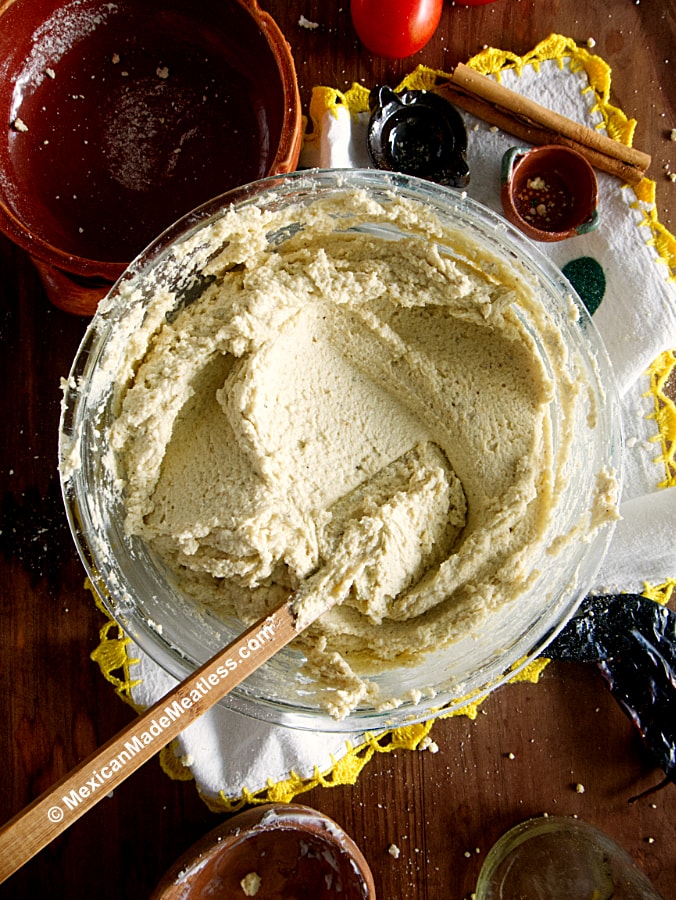

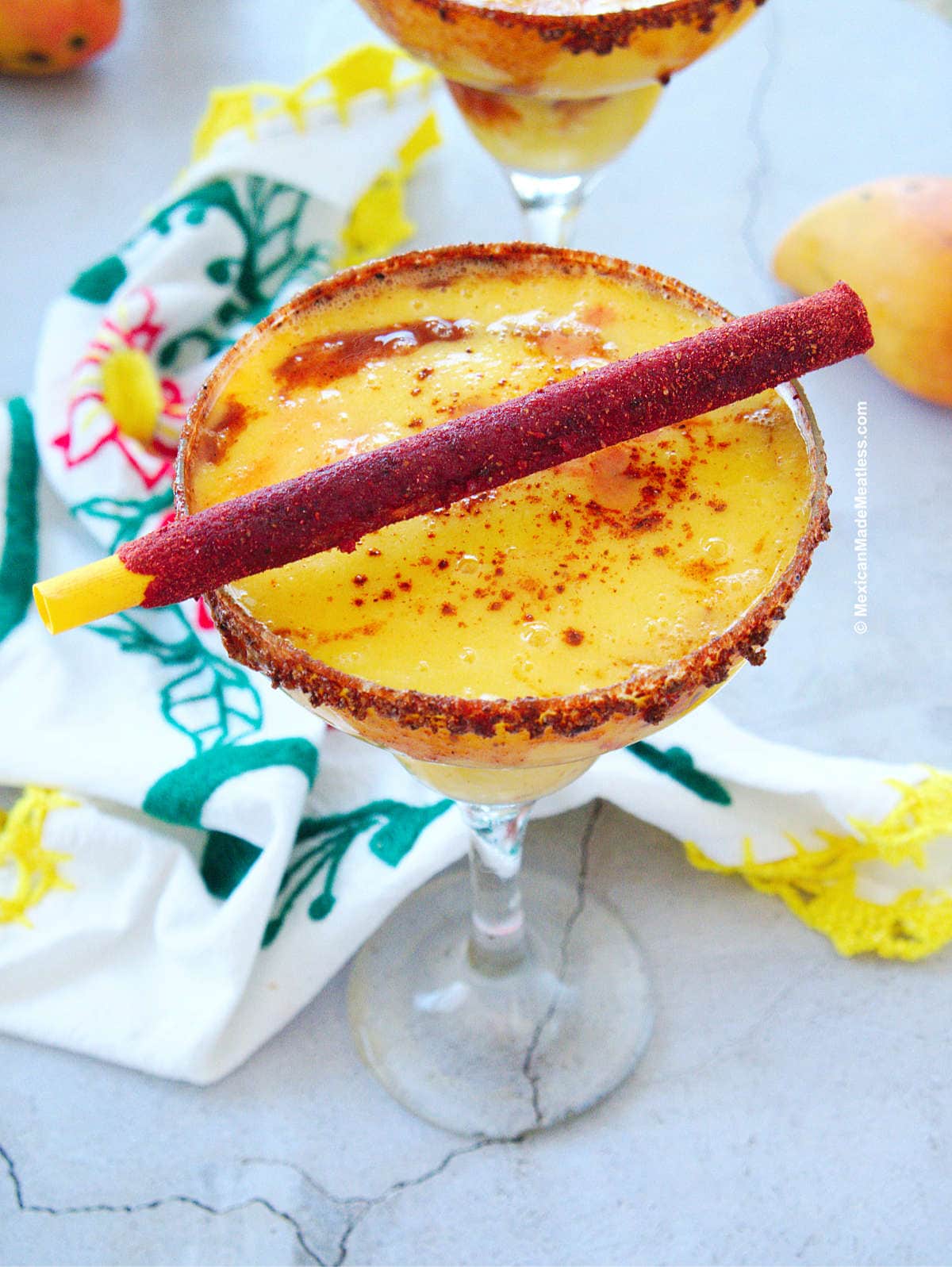

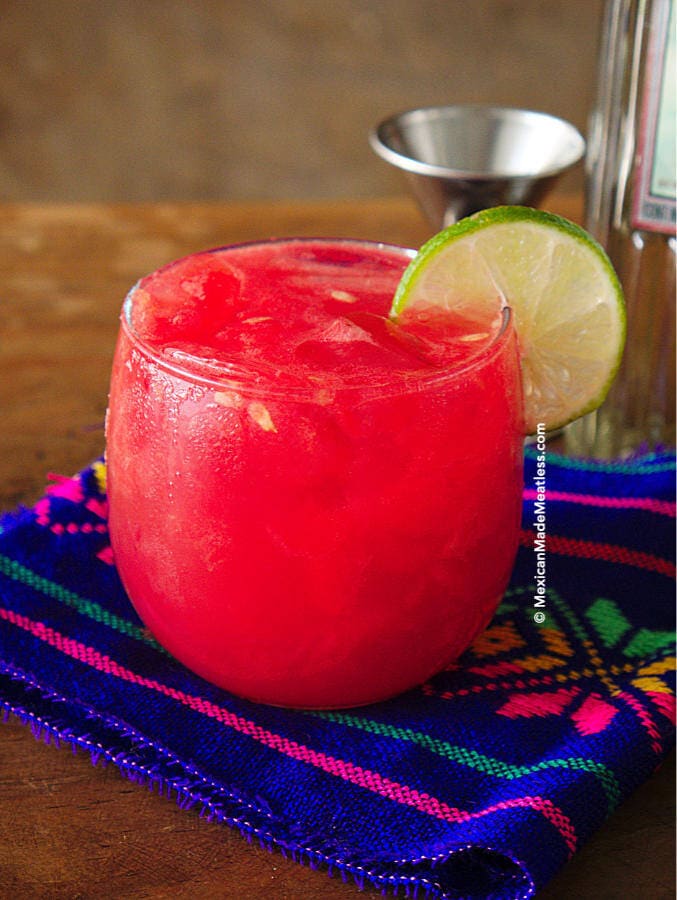
Che delizia! Looks beautiful! Almond milk is very typical here in southern Italy! Beautiful blog, I really enjoy it! 🙂
Great tip for stabilizing the milk. I've been making almond milk for about 2 years now and don't really mind the separating but I have tried using lecithin which works well but I find it leaves a bit of a funky taste. I can't wait to try your idea.
I love this – I only really drink almond milk these days anyway and can't wait to try making it at home!
Brilliant! We are always on the search for non-dairy alternatives and I am so looking forward to trying this out.
Lovely post! and congrats!
What a great tip, I've been making nut milks for a long time now and this will certainly come in handy. I've always wondered why my homemade milks separated but the store bought ones didn't seem to, this must be the reason.
Great timing Nancy, I'm trying out non-dairy milks at the moment! Up to rice milk now and enjoying that, but I think I'll definitely be trying almond milk now after your glowing review 🙂 Thank you!
Beautiful recipe and photos of course. I have never tried almond milk, but it sounds lovely 🙂
Wow Nancy, this post is amazing. I love the sound of this almond milk and it's sounds amazingly tasty. I must give it a go some time and especially almond is a really healthy food. Thank you very much for sharing this great recipe. I can't wait to try it soon. 🙂
This is a great post! Almond milk is also on my rotation of non-dairy milks (along with rice and soy milk). I think I might try your almond milk recipe! 🙂
Girl, the last time you said something was addictive, you were right. That Hokkaido squash is my drug! I am DEFINITELY trying this soon! Will let you know how it goes for sure!! I am so excited 😀
Gosh! I love that first picture Nancy…So beautifully composed that it epitomizes “simplicity is the greatest sophistication”
Looks really delicious and healthy too. Will definitely try this out! Thanks a lot!
I am so going to try this–thank you!
how have i never seen your blog before? love this!!!! thanks for the tip!
to make coconut milk the recipes I’ve seen call for the shreds & water to be heated on low…..I’m imagining for maximum extraction of nutrients & coconut flavor. I was wondering why the almonds weren’t being heated as well at least heating the mixture once they were ground up in the water for maximum extraction but thought maybe it would.give a weird after taste. So I ask do you think the almond mash mixture should be heated once mixed with water for further extraction or possibly to further soften the almonds (for machines other than vitamix) and return to be blended again? Or you think heating them wouldn’t really do much and can be reserved for after straining and for binding purposes only? Also do you think the heat will damage the nutrients of the milk? Just curious because heat is needed in coconut milk.and is a good thing.
Hi Brandi,
The only time I’ve heard of heating the water for coconut milk is when using desiccated coconut. But I’m not an expert at making coconut milk from scratch or from a fresh coconut.
My experienced has been that when heating the almond milk it can quickly curdle. I couldn’t tell you if or how heating damages the nutrients. I have a basic and not very powerful blender that I use, and haven’t run across grinding problems. As long as you soak the almonds overnight they will be soften enough to blend. Also blend them in small batches so that you can extract as much flavor as possible.
I hope this helps! 🙂 ~Nancy
Ok that sounds good. So the heat definitely needs.to be very low for the 15min time duration you recommend heating it to prevent separation correct? I don’t want it to curdle.
Yes that is correct Brandi. Make sure you keep a close eye on it because it can quickly curdle. Have fun;)
Just wanted to give an update. I used approx. 2.5 cups of almonds before soaking. Ended up with 7c. of milk. I heated the milk much longer than 15mins since it was a much larger batch but on very low. So low I could spoon it out and taste it without blowing on it first. It turned out great but it did separate while cooling. I mixed it a few times while it cooled and it seemed to separate less. After being refridgerator over night it was completely separated again. I wondered if I should’ve brought it to a boil and then simmered it or what I did wrong. I shook the jars again really well and to my surprise they never did separate again. Have you experienced this? I’m just happy it didn’t separate again. I can say that I used a little bit of the milk and added extra vanilla & honey until it tasted about as sweet as the FV Creamer I use. I wanted to try out using it as creamer. It tasted ok but even after shaking it up a few times it has still separated a little whereas the milk never did again. I’m thinking it has to be the extra vanilla and honey because that’s the only difference. Thank you for posting this you have been very helpful. 🙂
Hi Brandi,
Thanks for the update. Yes unfortunately I have experienced that with batches I haven’t kept on eye on and allowed to boil. Like you giving it a hard shake kept it together. I don’t recommend bringing it to a boil. Just keep the heat very low, like you did, for the entire time.
Are you saying it separated in the coffee? If so first pour the almond milk into the mug then add the coffee to it. I don’t understand the physics behind it but it just works:) But sometimes if the coffee is extra strong the acidity can cause it to separate. It is really sensitive as you can see. Hopes this helps.
Hi there,
I dropped by your website by chance and am very impressed by your attractive pictures and make me want to try almond milk!
I am wondering if there has been any change in taste when you boiled the almond milk compared to raw almond milk. I know milk does when it’s boiled..
Hi Priscilla,
Welcome!
In fact the taste does change a bit. It depends on the almond variety I use and also the age but sometimes the almond taste is stronger raw. This is one of those recipes where experimenting really helps. Good luck & enjoy!
Hi, Have you ever tried making the milk with unblanched almonds? I might be too busy or lazy to peel almonds!
Hi Rachel,
I have a couple of times. Just be careful because the skin may possibly cause curdling. Maybe make it raw or don’t heat afterwards. Of course you could also just buy blanche almonds. Good luck.
I’m so happy I found your website!! A friend told me to try almond milk in place of cow’s milk, because of lactose intolerance. I’ve bought the commercial almond milk, but not only is it expensive, it has extra ingredients in it I don’t want. I made one batch of the milk from paste, but it was grainy, and also separated. Now I will try it again using a fine sieve, and also try heating it to see if I can keep it from separating. Another thing; I’ve heard it’s best to use unpastuerized almonds (which may be available only on the Internet because I guess all almonds in stores are pastuerized so they have a longer shelf life). Can you tell me if there is a difference in the milk using the raw almonds instead of the blanched or pastuerized? Thank you!
Hi Gail,
Yes the paste or powdered almond milks are not very good. I wasn’t aware of the pasteurization of almonds, so I’m not sure what exactly were the ones I’ve used. Sorry, but I can’t tell you what kind of results you’ll have. Have fun experimenting and I hope your almond milk comes out great!:)